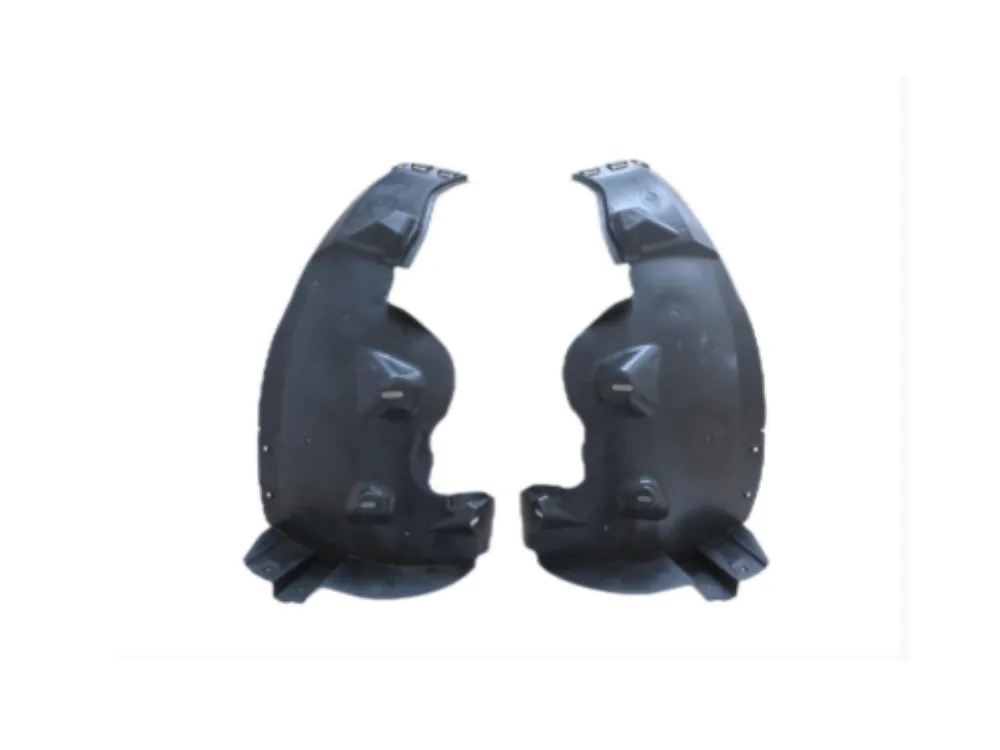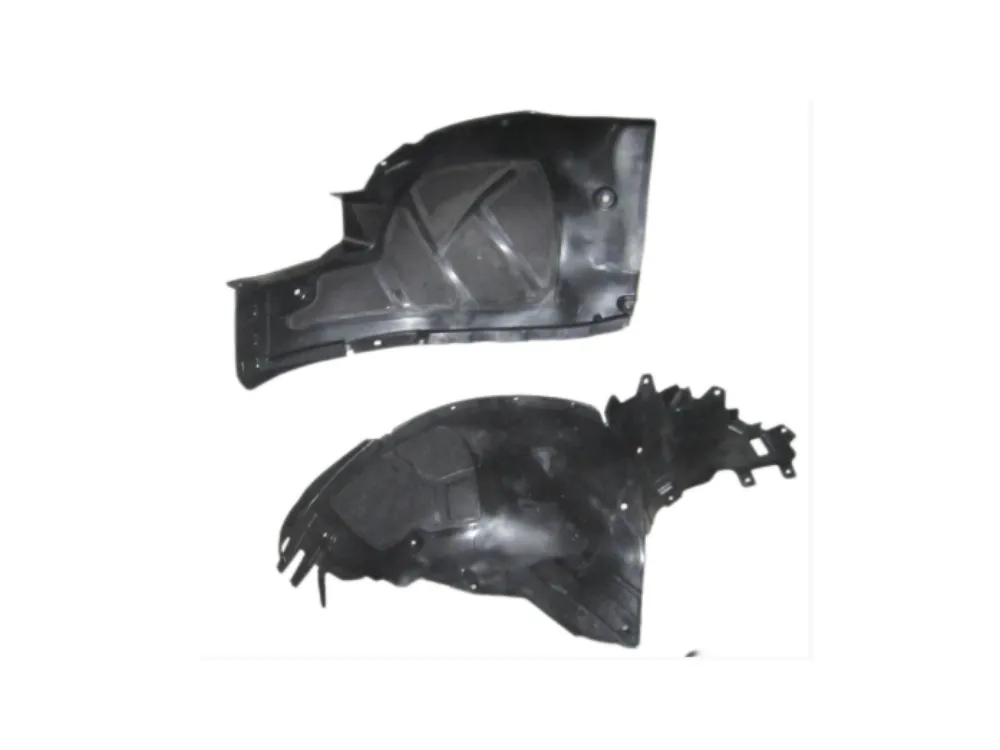Practical Guide to Choosing Long-Lasting Car Fender Materials
Car fenders are among the most frequently damaged exterior panels on a vehicle, yet they are central to protecting bodywork, mechanical components, and visual appeal. Choosing durable materials for car fenders affects repair frequency, maintenance cost, vehicle weight, and even fuel efficiency. This guide walks through the material options—from traditional metals to advanced composites—explaining real-world tradeoffs so fleet managers, repair shops, and vehicle owners can make informed choices for long-term durability.
Metal Options and Their Tradeoffs
Steel: proven toughness and serviceability
Steel remains the traditional choice for many car fenders. Its major strengths are high impact resistance and ease of repair. A steel car fender can absorb energy during a low-to-moderate collision and is often repairable by conventional bodywork (hammering, dolly work, panel beating). For fleets operating in urban or heavy-use environments, the repairability of steel car fenders translates into lower downtime and lower repair bills compared with some non-metal alternatives.
But steel has downsides: it is heavier and prone to corrosion if protective coatings fail. Therefore, using galvanized or electro-coated steel, followed by high-quality primers and paints, is essential to ensure steel car fenders perform well over many years in wet, salted, or coastal climates.
Aluminum: lighter weight with good corrosion resistance
Aluminum provides a compelling alternative where weight savings matter. An aluminum car fender reduces unsprung mass and overall vehicle weight, improving fuel economy and handling. Aluminum naturally resists rust, which gives aluminum car fenders an edge in longevity under corrosive conditions.
Aluminum dents differently from steel; small impacts can produce creases that sometimes require replacement rather than reshape repair. Repair techniques differ and may require specialized tools or methods. For passenger cars and light trucks where both fuel economy and corrosion resistance are priorities, aluminum car fenders are a very durable choice.
Polymer and Plastic Solutions
Thermoplastic panels: resilience and cost-efficiency
Thermoplastics—such as polypropylene (PP), acrylonitrile butadiene styrene (ABS), and polycarbonate blends—are widely used for modern car fenders and fascia components. Thermoplastic car fenders offer flexibility that helps them absorb minor impacts and often spring back to shape after low-speed encounters. Because they do not rust, thermoplastic car fenders reduce maintenance related to corrosion and salt exposure.
From a manufacturing perspective, thermoplastic panels are economical in high volume because of injection or compression molding capabilities. For fleet operators, thermoplastic car fenders frequently yield lower lifecycle costs for non-structural panels: replacements are inexpensive, and repair can be fast with plastic welding or adhesives when applicable.
Reinforced plastics and polymer composites
Reinforcing thermoplastics with glass fibers or mineral fillers improves stiffness and long-term dimensional stability. Glass-fiber reinforced polypropylene (GFPP) or similar compounds produce car fenders that resist repeated flexing and stand up to more severe service conditions than unfilled plastics. These composite polymer car fenders are common where weight, corrosion resistance, and moderate impact durability are required.
Compared with metal, reinforced polymer car fenders reduce part count (integrated clips and mounts), lower assembly time, and often improve crash behavior by allowing controlled deformation.

Fiber-Reinforced Composite Materials
Fiberglass: cost-effective customization and repair
Fiberglass reinforced plastic (FRP) remains a practical option for aftermarket and specialty fenders. Fiberglass car fenders are moldable into complex shapes and offer good stiffness-to-cost ratios. In many repair shops, fiberglass panels can be patched and refinished relatively inexpensively, which preserves function and finish after damage.
However, fiberglass can be brittle under extreme impact and may crack rather than dent. For vehicles used in high-risk environments, engineers often design fiberglass fenders with sufficient lamination or combine them with inner reinforcements to improve toughness.
Carbon fiber: premium strength-to-weight and performance
Carbon fiber reinforced polymer (CFRP) delivers an outstanding strength-to-weight ratio, making carbon car fenders the material of choice for high-performance cars and racing applications. Carbon fiber car fenders reduce mass dramatically, improving acceleration, braking, and cornering.
The main tradeoffs are cost and repair complexity. Carbon fiber panels are expensive to manufacture and generally require specialized repair or full-piece replacement after severe damage. For performance-driven use cases where weight savings and stiffness are paramount, carbon fiber car fenders excel in both durability and performance.
Hybrid and Coated Metal Strategies
Coated steel and galvanization techniques
Modern production often pairs steel with protective surface treatments to bring the durability advantages of steel car fenders while mitigating corrosion risks. Galvanized steel, zinc coatings, or advanced polymeric protective layers help steel resist rust even in aggressive environments. When paired with proper paint systems and seam sealers, coated steel fenders can deliver decades of service on commercial and municipal vehicles.
Metal frame with polymer outer skins
A hybrid approach uses metal internal reinforcements combined with a polymer outer skin. In this construction, the metal structure provides crash energy management while the polymer skin resists dents, scratches, and corrosion. These hybrid car fenders are repairable in terms of inner support and often simple to replace for outer cosmetic damage—an attractive balance for fleets requiring both structural durability and low maintenance.
Key Durability Criteria to Evaluate
Impact absorption and predictable deformation
What happens to a car fender in an impact matters. Durable materials should either absorb energy through controlled deformation or flex without catastrophic damage. Thermoplastic and composite car fenders often flex and dissipate energy, while metals may crumple or dent in controlled ways. Understanding how each material behaves helps designers ensure that car fenders protect the cabin and more valuable components.
Corrosion resistance and environmental aging
Materials that resist corrosion—aluminum, polymers, and many composites—require less long-term maintenance. UV exposure, temperature cycling, and chemical exposure (road salts, oils) accelerate aging. Selecting UV-stabilized polymers, anodized or coated aluminum, or well-protected steel improves the lifespan of car fenders across climates.
Fatigue performance and long-term dimensional stability
Repeated loading from road vibrations and minor impacts can cause fatigue. Reinforced polymers and properly treated metals maintain dimensional stability longer. Passenger vehicle car fenders must retain fit and finish for years; fleet vehicles benefit when fenders don’t loosen or deform over thousands of miles.
Repairability, Lifecycle, and Cost Considerations
Ease and cost of repair for different materials
Repairability directly affects total ownership costs. Steel car fenders commonly allow cost-effective dent repair; thermoplastic parts may be repaired by plastic welding or replaced cheaply; advanced composites often need specialist renovation or replacement. Fleet operators typically prefer materials enabling quick roadside or local-shop repairs to minimize downtime.
End-of-life recycling and sustainability
Sustainability is rising on procurement checklists. Aluminum and many thermoplastics are recyclable, offering environmental benefits and potential material-cost recovery. Carbon fiber recycling is improving but remains more complex. Considering recyclability of car fenders helps manufacturers and fleet managers meet regulatory and corporate sustainability goals.
Application-Driven Material Choices
Urban fleets and high-utilization vehicles
For taxis, delivery vans, and city buses, durability, low maintenance, and rapid repairability are crucial. Thermoplastic car fenders or coated steel are common in these segments because they reduce corrosion worries and keep repair times short.
Off-road and heavy-duty vehicles
Off-road trucks, agricultural equipment, and heavy-duty commercial vehicles often demand metal or reinforced composite car fenders capable of withstanding rocks, branches, and heavy loading. Steel or thick aluminum—or polymer skins over metal substructures—are typical choices to maximize toughness.
Performance and luxury vehicles
Performance and luxury manufacturers frequently choose aluminum or carbon fiber car fenders to meet lightweight and aesthetic targets. These materials enhance driving dynamics, but owners should expect higher repair costs if panels are damaged.
Design, Manufacturing, and Quality Control Factors
Manufacturing methods that affect durability
Forming techniques (stamping for metals, injection molding for thermoplastics, lay-up for composites) influence part strength and consistency. Proper mold design, controlled curing, and correct material selection reduce weak points and improve overall durability of car fenders.
Quality control and material certification
Supplier quality, incoming material inspection, and process controls ensure car fenders meet durability expectations. Certification for corrosion resistance, impact standards, and dimensional tolerances helps manufacturers deliver reliable parts that stand up to real-world conditions.
Practical Maintenance and Protection Tips
Preventive maintenance routines
Simple routines—regular washing to remove salts, quick repair of paint chips, and seasonal undercoating—extend the life of car fenders regardless of material. For steel fenders, timely rust treatment is critical. For polymers and composites, inspection for cracks or delamination should be part of scheduled maintenance.
Protective upgrades and aftermarket options
Installing protective films, stone guards, or ceramic coatings reduces surface damage and preserves finish. For fleets operating in harsh environments, adding mud flaps, rock shields, or reinforced leading-edge guards prolongs the lifespan of car fenders.
Decision Framework: Matching Material to Mission
Balancing weight, cost, and repair logistics
Choosing the most durable car fenders is rarely about a single property. Decision-makers weigh weight savings (aluminum, carbon) against repairability (steel) and cost (thermoplastics). For many fleets, thermoplastic car fenders strike the optimum balance—light, corrosion-resistant, economical, and easy to replace.
Lifecycle modeling and total cost of ownership
A robust procurement decision uses lifecycle cost models that include purchase price, expected repair frequency, downtime costs, fuel or energy savings from weight reductions, and end-of-life handling. This approach ensures that the chosen car fenders align with operational priorities and budgets.
FAQ
What is the most durable material for car fenders?
Durability depends on operating conditions. Steel provides excellent toughness and repairability; aluminum offers corrosion resistance and lower weight; reinforced polymers and composites offer corrosion resistance and controlled impact behavior. Matching the material to use case yields the best durability outcome.
Can plastic car fenders hold up to frequent city driving?
Yes. Modern thermoplastic car fenders are engineered to flex and return to shape under minor impacts typical in city driving. They resist corrosion and often cost less to replace, making them durable in high-utilization urban fleets.
Are carbon fiber car fenders worth the higher cost?
For performance-focused applications, carbon fiber car fenders are worth the investment due to significant weight savings and stiffness. For general-purpose vehicles, their high cost and specialized repair needs make them less practical.
How do I decide between steel and aluminum for fleet vehicles?
Consider repair infrastructure and climate. If easy, inexpensive repairs are critical and corrosion control is manageable, steel is a solid pick. If corrosion, weight, and fuel efficiency matter more—particularly in wet or coastal regions—aluminum is preferable.
Table of Contents
- Practical Guide to Choosing Long-Lasting Car Fender Materials
- Metal Options and Their Tradeoffs
- Polymer and Plastic Solutions
- Fiber-Reinforced Composite Materials
- Hybrid and Coated Metal Strategies
- Key Durability Criteria to Evaluate
- Repairability, Lifecycle, and Cost Considerations
- Application-Driven Material Choices
- Design, Manufacturing, and Quality Control Factors
- Practical Maintenance and Protection Tips
- Decision Framework: Matching Material to Mission
- FAQ


